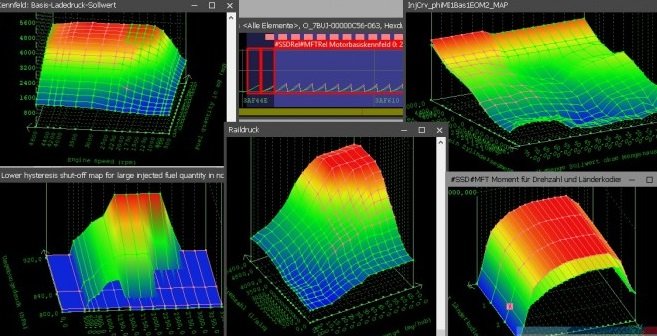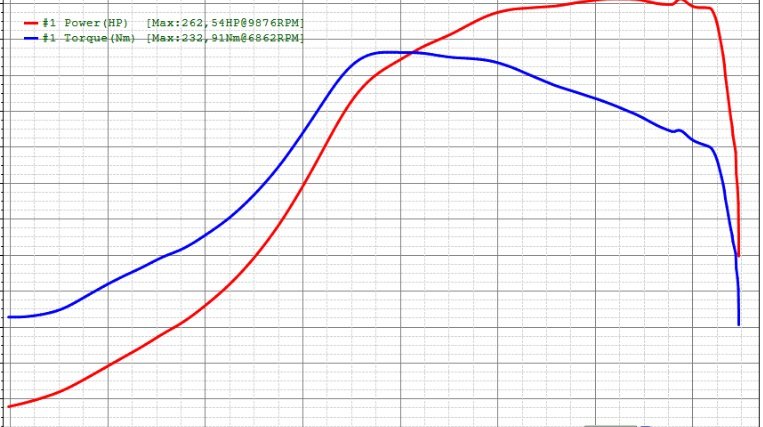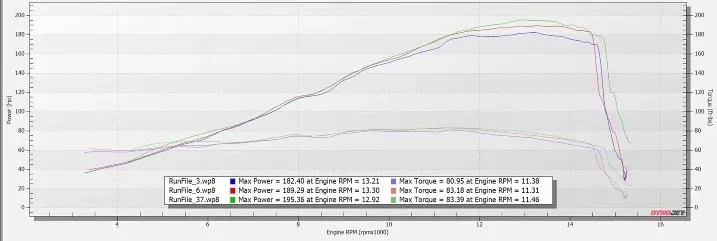
ECU FLASHING & REMAPPING
FLASHES, TUNES, DERESTRICTS FOR VIRTUALLY EVERY MAKE & MODEL.
AWARD WINNING, TROPHY STACKING, PAVEMENT CARVING FLASH TUNES.
IF “KNOWLEDGE IS POWER”, THAN OUR OVER TWO DECADES OF ECU FLASHING & EDITING EXPERIENCE MAKE US EXTREMELY POWERFUL. FLASH TUNES AVAILABLE FOR MOST MAKES & MODELS. MOTORCYCLES & ATV’S. CRUISERS, SPORTBIKES AND EVERYTHING IN BETWEEN. FROM MINOR FIXES TO COMPLETE REFLASHES AND DERESTRICS. WHAT EVER YOUR ECU NEED, WE’VE MOST DEFINETELY GOT YOU COVERED.
WHAT IS ECU FLASHING ?
The hot topic in motorcycle performance & reliability these days is flashing your ECU. You hear the term “flashing” brought up all the time. But while the term is gaining in popularity, and is often associated with big gains, we want to know: what exactly is ECU flashing, anyway? For that, let’s start with a little back story.
If you’re of a certain age, then you might remember the nights spent in the shop, turning wrenches and busting knuckles trying to add more power to your motorcycle. There’s an art, some might even call it a cathartic undertone, to pulling a carburetor and adjusting float levels, changing jets, moving clips, and reading spark plugs. Get it right and it’s certainly rewarding. Get it wrong (which is much more often the case), and you have to pull it all off and try again. It’s annoying and usually time consuming, to say the least, and often you walk away greasy, dirty, smelling like gas, and a little pissed off. Odds are you probably lost your 10mm socket, too! All that just to gain five horsepower, if you’re lucky.
Despite the romance of it all, the digital age of motorcycling is just better. Electronic fuel injection is better than the carburetor. Same goes for “ride by wire” throttles. The precision each bit of tech offers is far superior to its analog counterparts. But therein lies the issue; change is hard, and technology can be intimidating to some people. Especially when it comes to making a motorcycle better.
Enter the world of ECU flash tuning. Modern motorcycles rely on the Electronic Control Unit (or a series of ECU’s) to provide basically every necessary electronic input to make the bike perform. For the purposes of this explanation, we’ll focus on the delivery of spark, fuel and air. With modern fuel injection and electronic throttles in stock trim, what we are requesting with our right wrist is not always what the motorcycle is delivering.
Manufacturers spend a great deal of time developing specific lines of code to meet certain requirements, primarily emissions related, in order to make authorities happy and to be able to sell their motorcycles all around the world. By definition, however, those settings compromise maximum performance, longevity and reliability in order to meet government regulations. This much hasn’t changed between analog bikes and digital.
Whereas in the past we would have to get our hands dirty and physically alter or change a part, today we can gain back a considerable amount of performance by simply plugging in a computer and altering specific lines of code set by the original manufacturer.
CHAMPION TUNED
CHAMPION TUNED
MODELS WE CAN TUNE
BMW
CAN-AM
DUCATI
HARLEY
HONDA
HUSQVARNA
INDIAN
KAWASAKI
KTM
POLARIS
SUZUKI
TRIUMPH
YAMAHA
ECU FLASH OPTIONS
Fuel Map editing
IAP map editing
Remove top speed limiters
Modify RPM limiters
Remove throttle limiters / restrictions
Turn fans on earlier
Disable/Enable multiple sensors
Secondary Throttle Plate (STP) Map Editing
Quick shifter fix, delay time adjustment
Synchronizing TPS/IGN maps
Eliminating FI/limp mode restrictions
RAM Air Compensation Map Editing
Realtime Engine Data
Decel bangs and pops
Disable Top Speed Limiter
Exhaust valve Opening / Closing
ECU Mode
Firing Order EU / US / JP
Disable PAIR Valve / AIS
Various other features depending on bike model
TPS Fuel Maps
Ignition Timing Maps
Ignition Dwell Maps
Electronic Throttle Valve (ETV) Maps
Coolant Temp Idle Compensation
Acceleration Enrichment
Injector Balance Maps
Injector Timing Maps
Intake Flap Opening Maps
Steering damper strengthening
Fan Temperature
Quickshifter - (Requires Race Tools)
Autoblipper - (Requires Race Tools)
Launch Control - (Requires Race Tools)
Pit Lane Limiter - (Requires Race Tools)
Race Shift Pattern Sensor Configuration
( Race Tools Packages)
Disable Stock O2 Sensor
Disable Deceleration Fuel Cut
Disable Exhaust Valve
Disable PAIR Valve / AIS
MAIL IN ECU FLASHING OPTION
$300.00
STEP 1
FILL OUT THE “MAIL IN ECU FORM” RIGHT HERE.
STEP 2
PRINT A COPY OF THE FORM YOU’VE FILLED OUT. (TO INCLUDE INSIDE SHIPPING BOX).
STEP 3
GO TO YOUR LOCAL POST OFFICE OR WHICH EVER SHIPPER YOU PREFER TO USE. STICK YOUR SAFELY PACKAGED ECU IN A BOX. (INCLUDE A PREPAID RETURN LABEL). If you do not want to incl. a prepaid shipping label, we can handle shipping (Prices vary from $50 and up)
STEP 4
AWAIT A PHONE CALL FROM US. (PAYMENT CAN BE MADE OVER THE PHONE OR VIA MAIL) ONCE WE RECEIVE YOUR ECU! WE WILL DISCUSS OPTIONS WITH YOU, HAVE IT FLASH TUNED AND SENT BACK OUT WITHIN 48 HRS.
STEP 5
RECEIVE YOUR ECU IN THE MAIL. PUT IT BACK IN THE BIKE & ENJOY !
“At CHAMPION CYCLE our sole mission is to provide each and every client with the bespoke experience they deserve. We do not use off the shelve internet tunes and/or flashes, we handcraft each and every individual tune for each client. This ensures unparalleled precision and the service excellence most have come to expect of us. Give us a call if you are unsure if ecu flashing is right for you or if you simply have questions.
We are riders first and as such we understand how important your machine is to you.”

HOW IT WORKS
To guide you into the world of ECU flashing, lets presume you’re ready to go. Upon receiving a new bike, the first step is to put it on the dyno to get a baseline run. Peak power and torque are fun numbers to talk about, but we’re more curious about the entire curve. Dips, flat spots, and irregularities generally point to areas of improvement. A quick peek at the air/fuel ratio throughout the rev range could also clue us in on spots to improve.
As the saying goes, “the devil is in the details”, and it is here that we clue you in on the fallacy. While many aftermarket exhausts will have a bung to attach an O2 sensor and read the air/fuel mixture, the reading you’ll get from it is generally useless information. Unless you have a single cylinder motorcycle, the sensor is located so far downstream that you’re getting an average reading from all the cylinders. “That’s not very helpful, we want to know what each individual cylinder is doing.” To do this, we install individual sensors at the header pipes, as far upstream as possible, and especially before the exhaust gasses reach any cross over pipes or joints.
Behind the scenes is where ECU tuners earn their pay. To keep this as layman relatable as possible, the manufacturers write their ECU’s with their own language. Gaining access inside the ECU is one thing, but identifying, understanding, and then making changes using that language is another. After over two decades in the business of ECU tuning, We have the hardware, software, and know-how to do it.
Generally speaking, we are looking at fuel tables, how much fuel is being fed to the engine at any given rpm, ignition timing, and throttle mapping. The correlation between how much you twist your wrist versus how much (and how quickly) the actual throttle bodies open. With a baseline dyno pull as a reference, oxygen sensors installed, and access to the ECU established, it’s time to go to work.
Unlike the bikes of old that required altering a physical part in the search for power, ECU tuning is as clean as it gets. Though there’s a balance. In general, the process involves adding or subtracting ignition timing and/or fuel until any further changes result in a loss. Getting to that point, however, takes several dyno pulls to discover. If the readings from the oxygen sensor(s) reveal improper fueling, adding or subtracting fuel is a good place to start. Which can be done for the whole engine or a specific cylinder, or even at certain engine speeds. The principles of engine tuning remain the same as always, and running slightly rich on the fueling is a safe bet for longevity.
Reading the fuel tables, We will identify (based on the air/fuel reading on the dyno pull) where in the rev range fuel can be added or subtracted, and with the push of a button, the change will be made. No more bloody knuckles and the constant need to open up a carburetor to change something. Successive dyno pulls tell us when to stop.
The same is true for ignition timing. A button press can advance or retard timing, and dyno pulls will reveal which direction to go. Usually, but not always, a degree more timing will net a little more power. The caveat, of course, is being careful not to trigger detonation, especially with pump gas.
This brings up another point: race gas. Or more specifically, fuel with a higher octane rating. Depending on the wants and needs of the owner, and their willingness to fill up with fuel not normally found at the pump, pushing the limits of the engine via ignition timing can be explored. Keep in mind, too, we are talking about an otherwise standard engine with stock components.
Another trick manufacturers employ, usually to get around emissions requirements, is to limit the amount of throttle opening independent of the amount you are actually twisting your wrist. In some cases, especially on newer sport, touring and cruising bikes, twisting your hand to the throttle stop does not amount to the butterflies opening all the way. There are several reasons manufacturers do this, but the result is there is horsepower left on the table!
As reputable tuners we can read the throttle tables and find where the actual amount of butterfly opening doesn’t match what’s being asked from the handlebar. Then, by simply changing those values via software, can reclaim not only power, but in many cases also better throttle application and drive ability. Blatant butterfly restrictions in the midrange, make it truly appalling in stock trim. After adjusting the throttle tables to properly let the engine breathe, Riders are blown away. “It’s a whole new motorcycle,” with a torque curve thanks to the Shift Cam variable Valve Timing technology that is insanely impressive.
After reading all this you might be wondering whether an ECU flash is for you. Put it this way, an ECU flash produces the greatest benefit on a modified bike, but even a bone-stock motorcycle can benefit. Which means your standard emissions related hardware would all still be intact. Nonetheless, government agencies make it difficult to legally upgrade your vehicle. Arm yourself with knowledge before deciding. Also, keep in mind flashed ECU can easily be returned back to stock settings with the click of a button.
However, legalities out of the way, flashing an ECU is generally a cheap and effective option to pick up easy power and generally improve a motorcycle’s overall performance. As mentioned before, this is especially true if you have other power adding modifications done. That said, if you are happy with your bike the way it is, then there’s no need to spend the extra cash. However, if you are riding a newer motorcycle, chances are you may not even be aware of just how restricted and/or poorly your motorcycle is running.
And what about piggyback tuners, you ask? In general, piggyback tuners are basically intermediaries between your ECU and the rest of the motorcycle’s subsystems. The piggyback unit will take signals from your ECU, then send slightly modified signals to the subsystems (generally related to fuel or ignition). The biggest issue with piggyback tuners is that, on some bikes, entire portions of the rev range are locked out! (what’s known as: Closed Loop) and piggyback tuners have no influence or ways to apply adjustments in these sections. Flashing does away with the middle man (piggy back controller) and gives full access to the rev range.
There you have it. A rundown on ECU flashing. Compared to the tuning methods your dad used to use, typing in keystrokes is far easier than turning wrenches. Not to mention your knuckles won’t get bloodied, your hands won’t get dirty, and your clothes won’t smell like gasoline.
That said, We’ll admit carbs themselves are pretty easy to work on, which is especially important if you need to work on one out on a ride. The prevalence of carbs still on the road today is fairly significant, and that number rises considerably in the dirt bike world since it’s still common for even new dirt bikes to have them. A big demerit for flash tuning compared to carbs is the amount of options and the multitude of tunable/editable settings.
However, not all bikes can be flashed as we tend to target popular models to crack the ECU’s code. Other bikes have security lockouts that are difficult to crack. If your bike falls into one of these categories, a piggyback tuner may be the way to go. If you’re not in a hurry of course, “Patience is a virtue” as we are constantly adding new models to our ECU editable options. Generally speaking we add a few different makes and models to our arsenal each and every month. Assuming your bike’s ECU can be flashed, it’s an attractive option to unlock power and have a nicer power curve.



